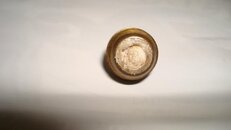O2 clean is kind of a misnomer...I clean a tank and valve and the do a PP blend of nitrox, diver X dives this tank and then gets it refilled in MX by resort Y. Resort Y pumps some bad stuff into diver X's tank. Yes the O@ clean punch on the vis is still valid...is the tank still O2 clean? No. Combustion requires 3 things...fuel, Oxygen, and heat. I will not PP fill a tank that has not been O2 cleaned, but cannot really trust any that I don't control, The one aspect I can control when PP blending is the heat. I fill uber slow. All tanks that might be subjected to a high O2 should be cleaned annually at the time of vis, but should not be truly considered O2 clean except for the first fill after the cleaning and inspection process.
just my .02$






